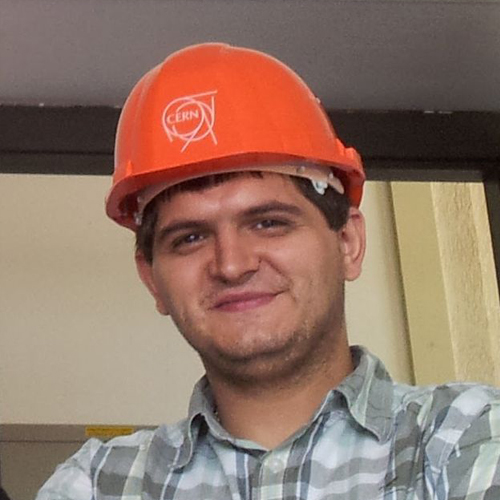CERN | My story
photo from the private archive
SZYMON PUŁAWSKI, PhD, Associate Professor
The first impression in the laboratory itself for a young nuclear and particle physics student was shocking – a fenced-in town with office buildings and metal halls. However, one felt a strangely pleasant and encouraging atmosphere.
|
CERN MY STORY
|
My first visit to the CERN laboratory was during my fifth year of graduate studies about 12 years ago. I designed a secondary beam charge detector for the NA61/SHINE experiment as part of my thesis. The experiment in which I participated and still participate was using a beam from the SPS accelerator. Its primary goal was to search for the critical point of nuclear matter and study the phase transition from hadron gas to quark-gluon plasma. The first impression in the laboratory itself for a young nuclear and particle physics student was shocking – a fenced-in town with office buildings and metal halls. However, one felt a strangely pleasant and encouraging atmosphere. The NA61/SHINE experiment is carried out in a metal hall on the French side of CERN. During my first visit, when the measurements were taking place, it turned out that work in such a laboratory lasts 24 hours a day. And I, as a young novice, had to get into the good graces and start my adventure, working six days on so-called “shifts” from 0.15 to 8.15. Despite the fatigue, it was quite an attraction and a really interesting experience. Since then, I have regularly visited CERN as part of the CERN Summer Student Program and later as part of my PhD studies and as an employee of the University of Silesia. During my stays at CERN, I deal with the beam steering system from the SPS accelerator in the experimental hall, beam detectors, and the upgrade of the NA61/SHINE experiment, whose main goal is to move the experiment to the new, at least for it, stage of measurements of particles containing charm. I am also the Deputy Team Leader of the University of Silesia team. As part of my cooperation with the NA61/SHINE experiment at CERN, I am also involved in scientific research related to the production of strangeness in proton-proton and heavy-ion collisions. These measurements were never done before. The information obtained from the experiments allows us to understand the properties of the phase transition between hadronic gas and quark-gluon plasma. Within the experiment, I am also the coordinator of the experiment’s software group. My primary role is coordinating the software development for the new phase (after 2021) of the NA61/SHINE experiment. I have the pleasure of working in an experiment dealing with the area of heavy ion collision energy, where there are still many unexplored and unknown areas. As we sometimes say about experiments at CERN, playing with blocks for big boys is extremely exciting and requires total commitment. At each stage, new theories are formed, and the results we receive verify some of them and reject others. Cooperation with CERN (within the NA61/SHINE framework and Physics Beyond Colliders group) has undoubtedly developed me as a scientist. Quarrels and frequent discussions with colleagues from CERN always lead to constructive conclusions, which allow us to conduct research in the unique aura of the CERN laboratory. |
|






